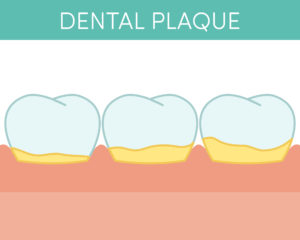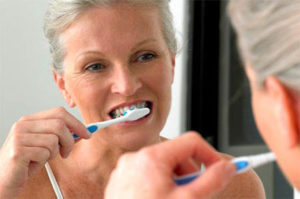
Plaque vs tartar. You probably know both dental terms. You may even understand that they are both bad for your teeth and oral health. The terms are related but not interchangeable.
What’s the Difference Between Plaque vs Tartar?
Before your next visit to the dentist, it wouldn’t hurt to brush up on some dental terms. Let’s start with plaque, tartar’s precursor. We all have plaque. In many ways, it’s an unavoidable result of eating and making saliva.
Medical professionals refer to plaque as “biofilm,” meaning it’s a mix of living (bacteria) and non-living (food particles)parts.
Plaque
Plaque is continually forming on the surfaces of your teeth. If you follow your doctor’s advice, it is also continually being removed as the result of brushing, flossing, and using a hygienic mouthwash. Plaque is a white or yellowish film.
You may notice its presence on the surface of your floss. Plaque isn’t good for your health, but (in controlled levels) it also isn’t terrible as long as you brush twice a day, undergo routine dental cleanings, and follow good oral hygiene habits.
If plaque is left to build on your tooth enamel, you risk developing tooth decay and gum disease. Dental plaque, like tartar, provides a home to harmful bacteria that make acids as the germs eat sugars found in your saliva.
The presence of bacteria causes your gums to swell, and they produce acids that can corrode dental enamel. It’s a bad combo that leads to tooth loss in some cases.
Tartar
Tartar is hardened plaque. One of the main causes of tartar (which is sometimes referred to as calculus) is a lack of proper brushing habits. If you have tartar build-up, don’t be too hard on yourself.
Some level of tartar buildup is inevitable. This is one reason why dental cleanings are so important.
The special tools used by your dentist can scrape away the hard layer of tartar found on your teeth. Unfortunately, your toothbrush just isn’t up to the job. This is one reason why dental cleanings are so important.
Tartar provides a home for bad bacteria. The presence of tartar is closely linked with gum disease and tooth decay. Think gum disease is just a cosmetic problem? Periodontal disease is the leading cause of tooth loss in this country.
So now you know the main differences with plaque vs tartar. Let’s explore some ways to reduce these causes of dental problems.
Tips for Reducing Plaque and Tartar
Regular brushing and flossing and undergoing dental cleanings are your best bet for preventing and eliminating plaque and tartar.
Toothpaste Tips
Not all toothpaste options offer the same levels of plaque removal. Studies have shown that baking soda is more effective at removing plaque than traditional toothpaste.
Toothbrush Tips
An electric toothbrush is also one of the best plaque removing tools. The thousands of vibrations per minute cannot begin to be matched by hand brushing. Plus, electric toothbrushes have a built-in timer that reminds users to brush for two minutes.
Since brushing cannot reach between your teeth, you’ll want to floss at least once a day.

Choose a Good Therapeutic Mouthwash
Mouthwash isn’t just for bad breath. A quality therapeutic mouthwash kills bacteria, which can slow or prevent the formation of tartar. Remember, the germ component of plaque and tartar is the main source of dental problems. By killing the germs, you can drastically slow or prevent tartar.
Dietary Considerations
In general, you will want to reduce sugary or starchy foods while increasing plant-based foods. Bacteria feed off of sugars. Any reduction in sugar intake will slow the formation of plaque and tartar.
Plaque fighting foods include:
- Leafy greens
- Nuts
- Broccoli
- Asparagus
- Celery
- Cheese
Sugar-free Gum
One simple and passive way to fight plaque is to chew sugar-free gum. Sticky gum rubs surface-level plaque to prevent the buildup of plaque.
How Can Professional Cleanings Help?
The only effective means of removing tartar is to undergo a dental cleaning with one of our skilled Chicago dental dental professional. During your visit, a special tool will gently scrape away yellow or brown buildup (tooth discoloration) above and below the gum line. This eliminates plaque and tartar buildup before they form on your teeth.
Once your dental cleaning is complete, a special rotary device will be used to polish your teeth. Dental cleanings can leave teeth immaculate and noticeably whiter. To prevent calcified plaque (tartar), patients should schedule twice-a-year cleanings.
Learn more about plaque vs tartar and how they affect your oral health
To schedule your next visit to our office, please contact our office online or call (847) 234-0517.
